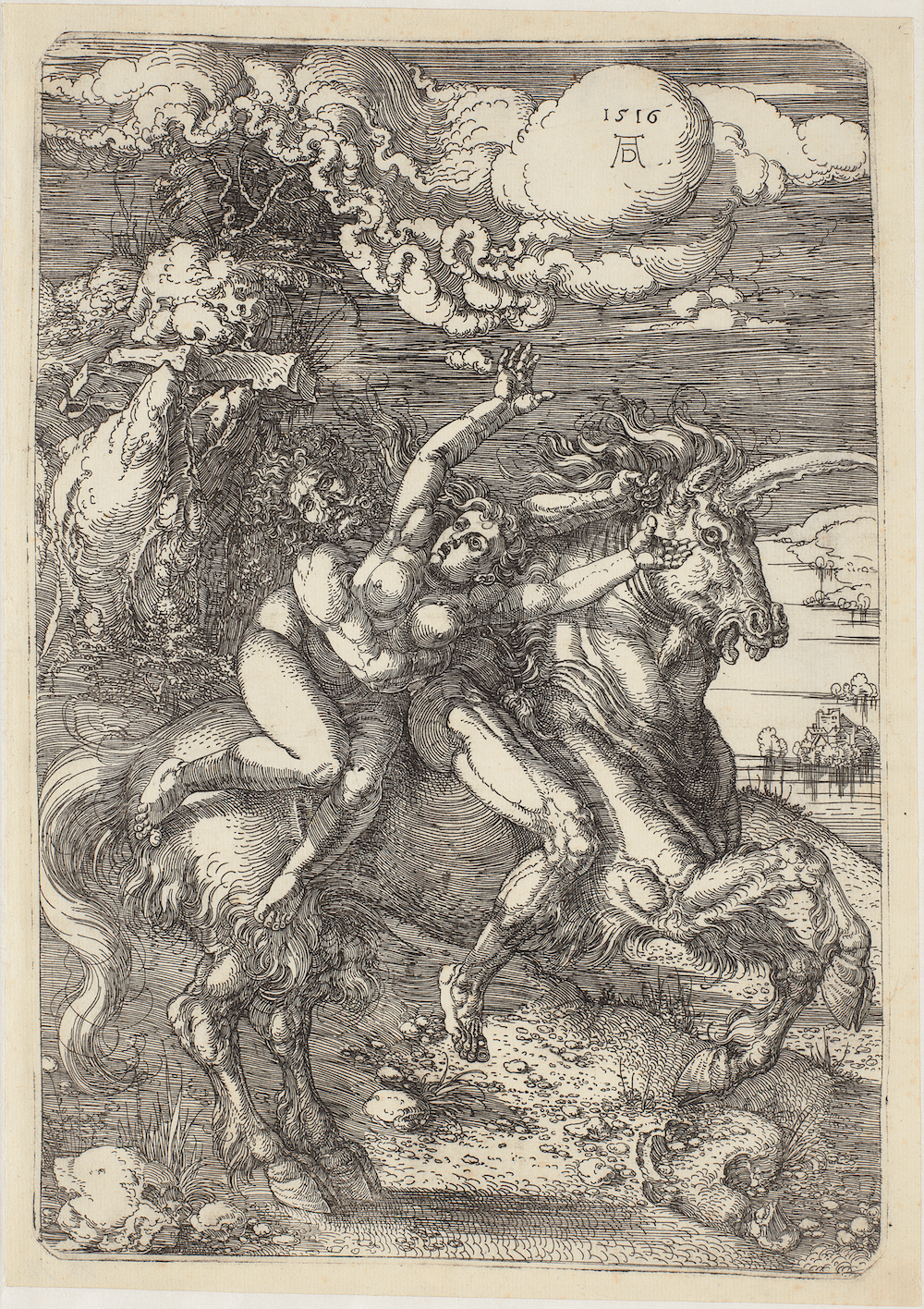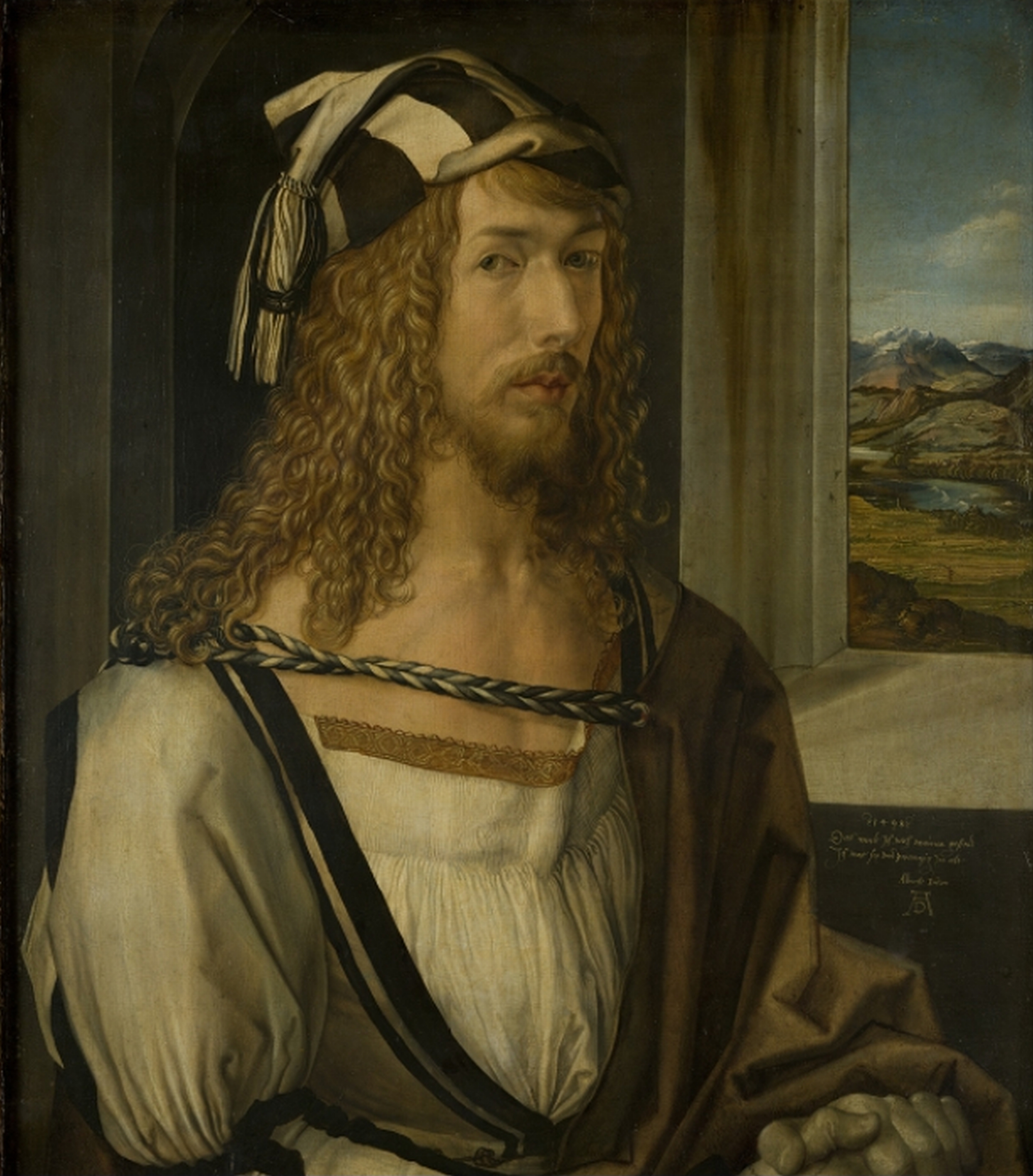This piece of art is shown to you thanks to the Statens Museum for Kunst in Denmark. Thank you :) !!
In spite of great diligence in learning, no-one has as yet provided an entirely satisfactory interpretation of the underlying meaning of this iron etching. Scholars have searched in vain for a literary source within classical mythology and German legend. It shows a naked horseman, his hair and beard wild and unkempt, his appearance very much like that of Dürer himself, grabbing an equally naked, large-bosomed woman and abducting her on a horned, horse-like creature, presumably one of those unicorns that many have heard of but never seen. Is this a hidden reference to something private? A self-penned anecdote? At any rate, the picture is still a puzzle, an unsolvable curiosity that challenges our minds and imaginations, forcing spectators to look at the picture rather than merely note it. Only six iron etchings by Dürer’s hand are known today. The Department of Prints and Drawings owns prints of every one of them, even of an unusually high quality – printed before the rust set in! Usually, graphic artists will use plates made from copper or zinc for etchings, but Dürer chose to experiment with iron plates. Every time he made a print, the ink-covered plate came in contact with a piece of damp paper. Eventually this created rust stains that appeared as shadows on the paper. To an artist who was such a perfectionist as Dürer, this was probably sufficient reason for returning to woodcuts and copper engraving.


 Albrecht Dürer
Albrecht Dürer